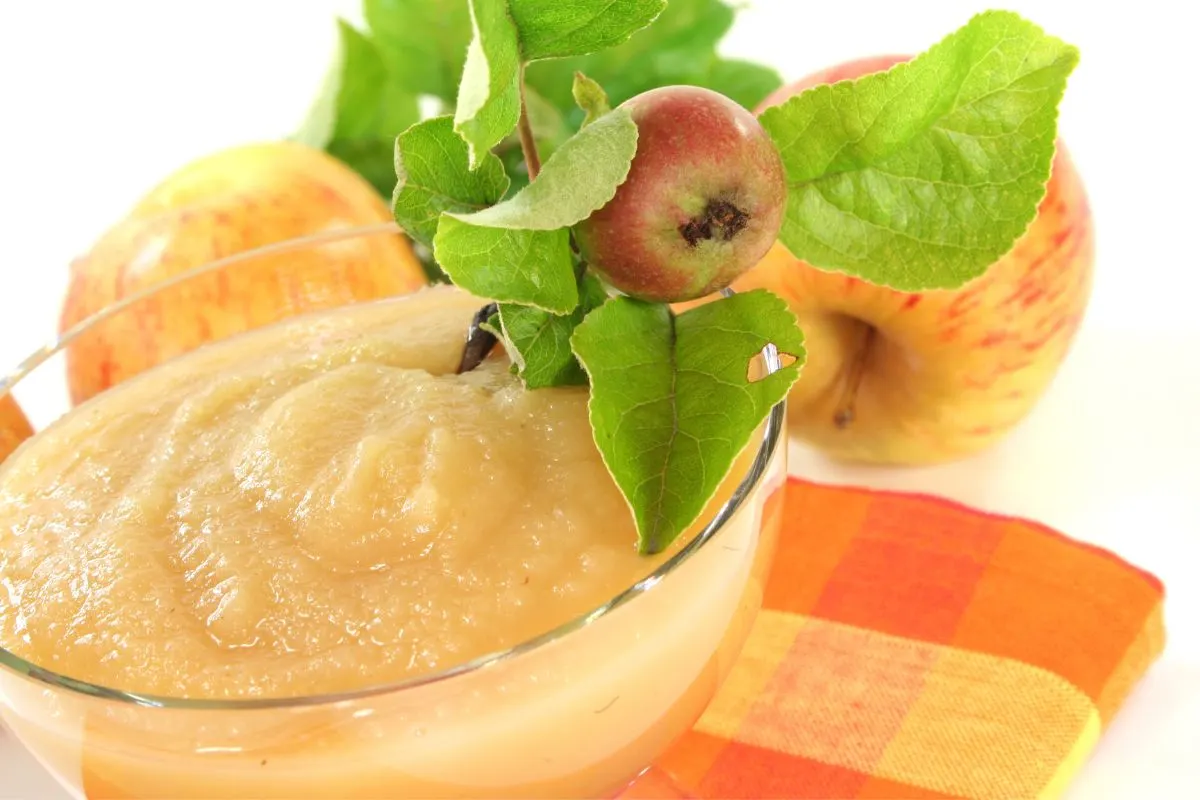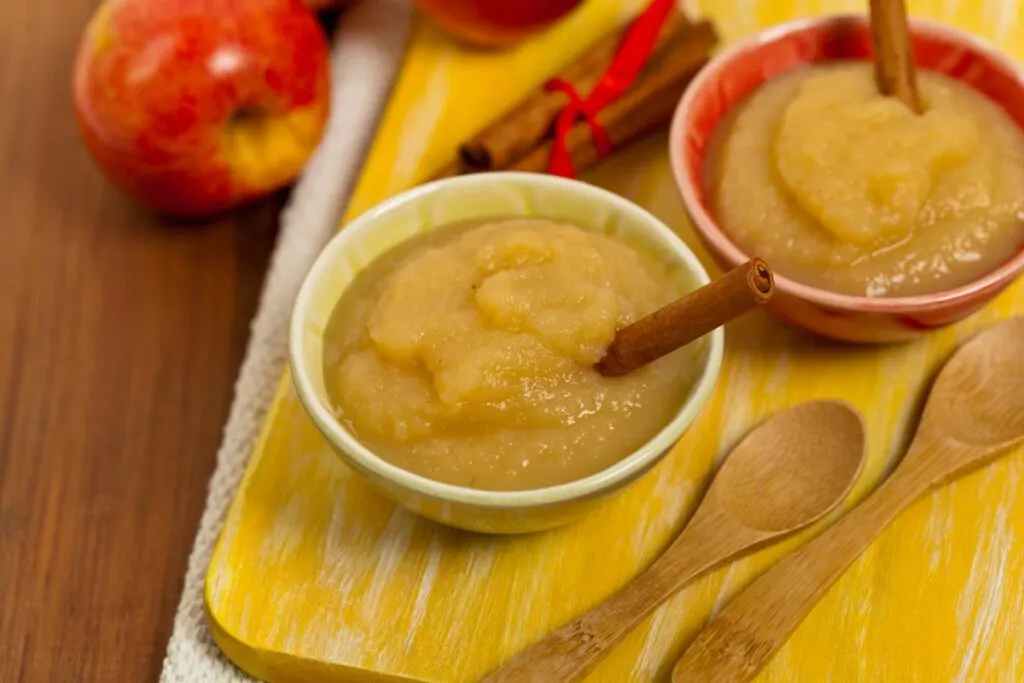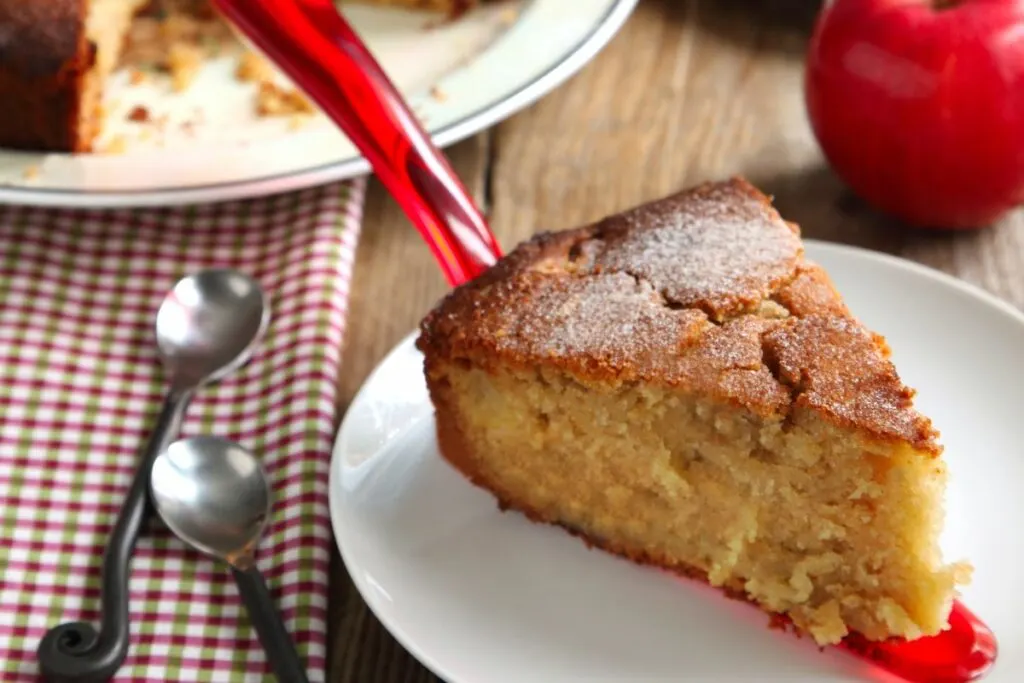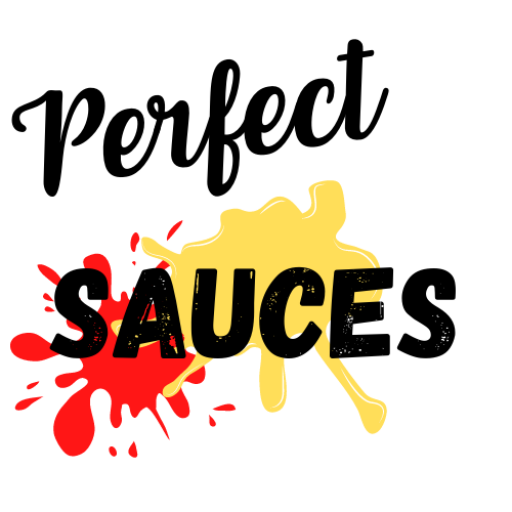From homemade Asian sauces to delicious Chinese sauces, there’s a new flavor all the time. But there is one tasty option most don’t know about. Applesauce. The question we get most is for a suitable substitute for applesauce for intolerance, the taste of it, or hate the store-bought versions. Well, I’ve listed several of the best.
You can substitute apple sauce with homemade applesauce, pumpkin puree, apple puree, sweet potato mash, Greek yogurt, and silken tofu. I’ll show you why these are the best and give you everything from tips, tricks, and ratios to these applesauce alternatives!

Jump To
🤷 What is Applesauce?
Applesauce is made from a single or blend of apple varieties, typically cored, peeled, or unpeeled, before cooking and mashing to create the iconic sauce. The light sweetness and tartness combined give applesauce its delightful taste. They pack a substantial apple flavor, with a hint of sweetness balanced by a light acidity, similar to pepper jelly.
🧑⚕️ Health Benefits of Applesauce
Like the many health benefits of apples, applesauce is stuffed full of goodness. It’s equally high in soluble fiber, which can help lower cholesterol levels, and high in antioxidants, polyphenols, and vitamin C, which help reduce the risk of chronic disease. Canned applesauce brands also vary. When purchasing, make sure to pick out an all-natural, unsweetened one with no more than 2 ingredients. The applesauce should also be refrigerated once opened and used.
🧑🍳 How to Make Applesauce
To make homemade applesauce, start by peeling, coring, and slicing ripe apples. Place them in a large pot with water, sweeteners like sugar or honey, and spices such as cinnamon or nutmeg. Bring to a boil, then simmer for 20-30 minutes until the apples are soft. Let it cool slightly, then blend to your desired consistency. Store in jars in the fridge for up to a week or freeze for longer preservation.
📌 How to Use Applesauce
Standalone Snack: Enjoy it on its own for a wholesome and healthy snack.
Meal Accompaniment: Pair it with grilled meat and vegetables to elevate the nutritional value of your meal.
Baking Ingredient: Incorporate applesauce in baking for both its taste and sweetness; it serves as a substitute for eggs and fat, providing moisture while reducing overall calories and fat content.
Culinary Applications: Enhance consistency, flavor, and texture in sauces, sugar free salad dressings, and glazes with the addition of applesauce.
Grilling Companion: Explore unconventional pairings by serving apple sauced chicken for a unique flavor combination.

💡 6 Best Applesauce Substitutes
Apple Puree
If you don’t have the sauce around, how about trying the puree. Apple puree and applesauce are essentially the same things, except their consistency differs and can be sold separately. So, using apple puree as a substitute for applesauce is your best shot at replicating it. Its adaptability also extends to accommodating dietary restrictions, such as vegan or gluten-free diets, making it a go-to option for a wide range of culinary needs.
Homemade Applesauce
Instead of buying canned or bottled applesauce, why not make it yourself? It’s really simple to make, and all you need are several apples and a high-powered blender. It’s essentially puréed apples with some added liquid and lemon juice. You can add flavorings if you wish, but most let their natural flavor shine with no added sugar. To make this switch, simply core an apple, skin on in a high-speed blender, and use the purée in a 1:1 ratio. Use this as a substitute for applesauce in all cooking or baking.

Pumpkin Puree
Pumpkin purée is peeled, cooked pumpkin mashed to a fine pulp, much like applesauce. While different in texture from the chunkier version, it can also pose as a stand-in for the sauce but with a completely different taste profile. If you are fine with changing from apples to pumpkin, use it in a 1:1 ratio and add a sweetener if needed to enhance the taste of your baked goods. Also, look out for an option without preservatives or artificial flavors.
Greek Yogurt
Greek-style yogurt is made by straining out the extra whey in regular yogurt. It’s thicker, creamier, less sweet, and slightly tangier than regular yogurt. It’s high in protein and other nutrients that add a satisfying undertone to baked goods. Add your yogurt in before the other liquids in a 1:1 replacement for applesauce. This way, you can adjust the liquid ingredients in the recipe and then compensate for the lack of sweetness by adding honey or a maple syrup substitute.

Sweet Potato Mash
Sweet potato mash is made by peeling, baking, and then blending sweet potatoes. Depending on the harvest and variety of the sweet potatoes, they can approximate the sweetness of applesauce, just without the tartness. It’s a nutrient-rich alternative for applesauce in muffin or cake recipes but doesn’t perform well when replacing fat in baked goods. To use as a substitute for applesauce, thin out the mashed sweet potatoes with a little water and use in a 1:1 ratio.
Silken Tofu
When a recipe calls for applesauce as a substitute for fat, silken tofu can be used. If you’ve never heard of it, silken tofu is undrained and un-pressed tofu. This block of tofu retains moisture, making it work well in recipes that require mixing and blending. This vegan ingredient can work as a substitute for applesauce in recipes using a third cup of silken tofu for every half cup of fat called for. Keep in mind that the distinct soy taste will alter the flavor of the dish, so it will work best in chocolate-based or strongly fruity recipes.
🧐 FAQs
You can use mashed bananas, pureed prunes, or pumpkin puree. You can also use yogurt or sour cream, but you may need to adjust the amount of sugar in the recipe to balance the tartness.
You can use mashed avocado, pureed zucchini, or coconut cream as a low-carb alternative. You can even use almond flour or coconut flour instead of wheat flour to make your recipes more keto-friendly.
Yes, you can use Greek yogurt as a substitute for applesauce in baking recipes. Greek yogurt will add moisture and protein to your baked goods, and it has a tangy flavor that complements many recipes.
